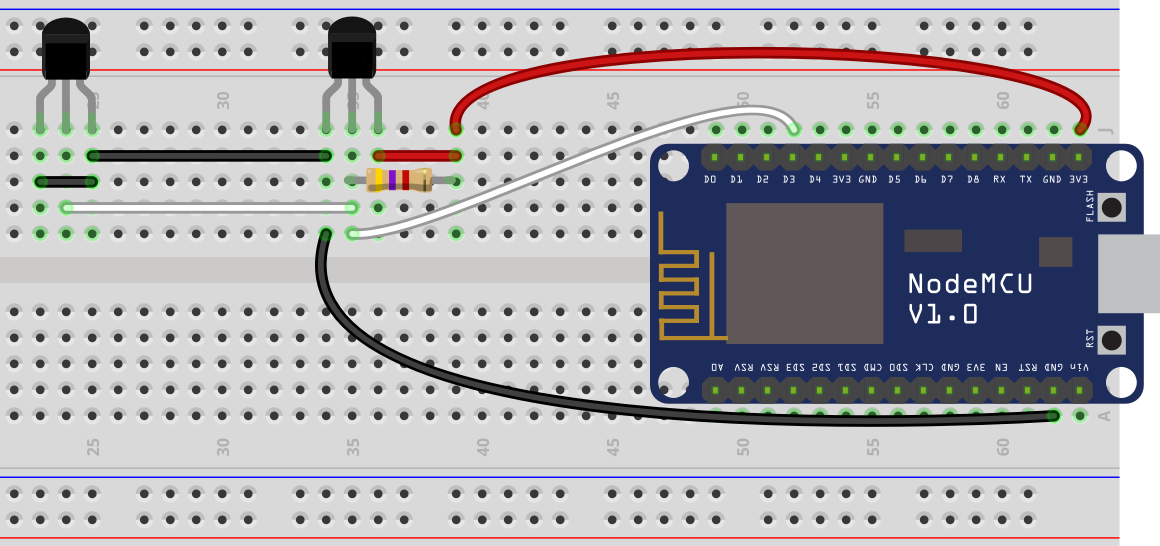
Kurs ESP8266 Obsługa czujnika DS18B20 Feriar Laboratory
DS18B20 Parasite vs Normal Mode. The DS18B20 sensor can be powered in two different modes. Normal Mode: The sensor is powered through an external source through the VDD pin and 4.7K ohm pull-up resistor. Parasite Mode: The sensor obtains the power from its own data line. Hence, no external power supply is required.

Raspberry Pi gpio interface with Temperature sensor ds18b20 projectiot123 Technology
Description I'm trying to make a few small temperature sensors for in our house and want to go for "low powered battery operation". My current plan is to use esp-now in the esp8266, deepsleep between measurement and use a ds18b20 to measure temperature.

When use ESP8266 and DS18B20 with parasite power pin must be cofigured as pushpull · Issue
And, the power supply is given to the VDD pin of the sensor. similarly, for the parasite mode, only data and ground pin are needed. In this mode, the sensor gets this power from the data line. Therefore, required no external power. so, In this tutorial, we are going to interface "DS18B20 Temperature Sensor with Arduino UNO".

YoperoTech Multiple DS18B20 parasitic mode.
The DS18B20 can be powered by an external supply on the V DD pin, or it can operate in "parasite power" mode, which allows the DS18B20 to function without a local external supply. Parasite power is very useful for applications that require remote temperature sensing or that are very space constrained. and
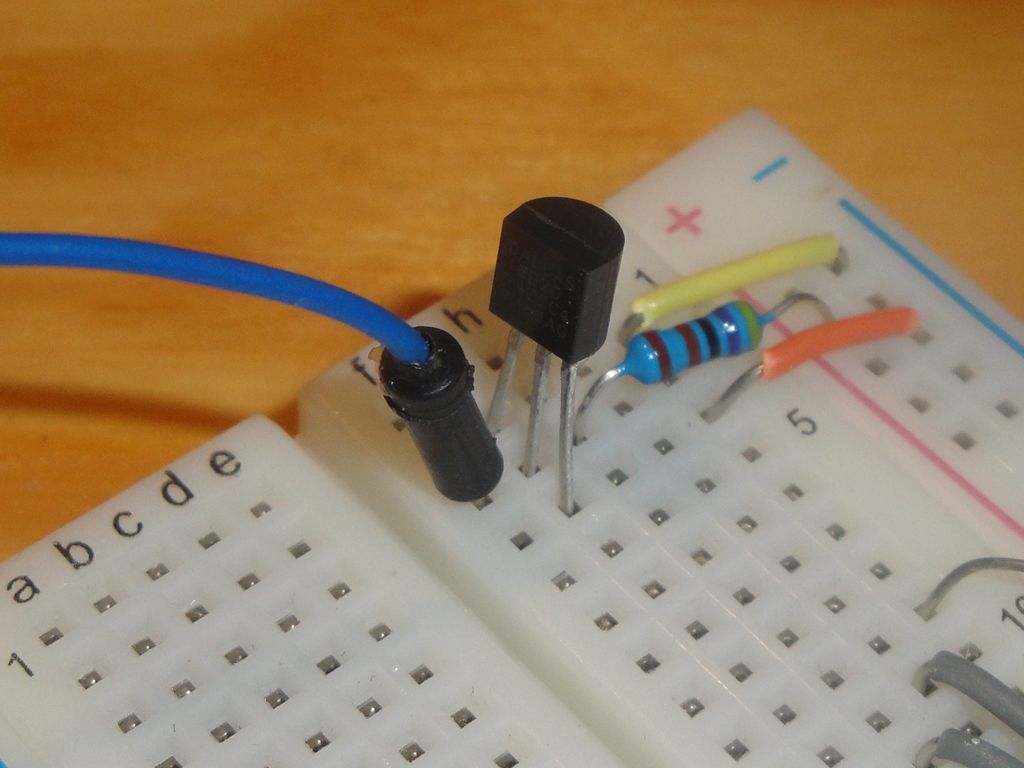
Arduino Slovakia DS18B20 Parasitic power mode
Schematic The sensor can operate in two modes: Normal mode: 3-wire connection is needed. You provide power to the VDD pin. Here's the schematic you need to follow: Parasite mode: You only need data and GND.
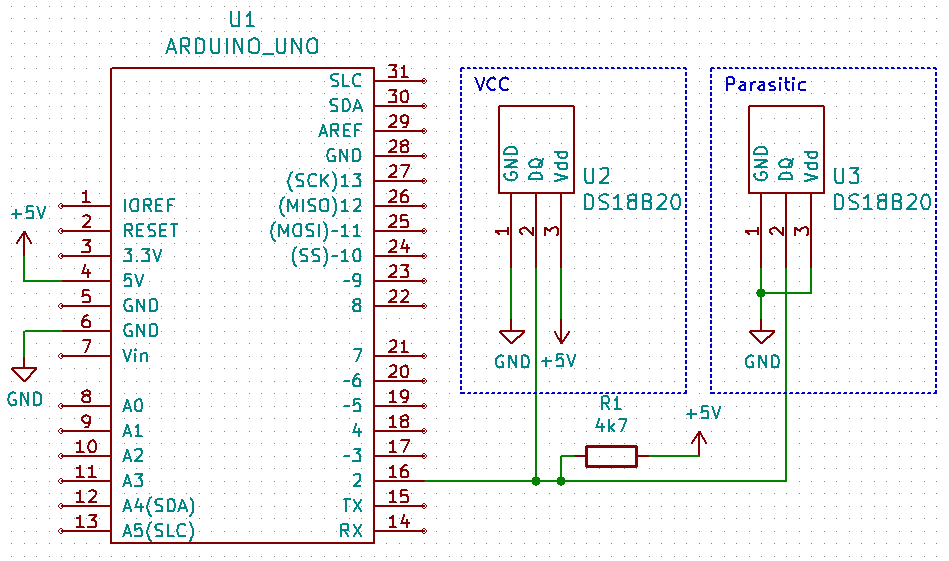
Arduino Slovakia DS18B20 Parasitic power mode
Figure-1.1: parasite power connection for DS18B20 temperature sensor (a) When the 1-Wire Bus (DQ-pin) is at LH-state, the C pp receives charging current from +5V rail; the DS also receives operating power from +5V rail. (DQ's input requirement current is 5 uA; the worst case available current is 5-3/4700 = 425 uA.)

DS18B20 Temperature Sensor with Arduino Schematic Diagram (parasite mode) Random Nerd
DS18B20 is a 1-Wire (one-Wire) Temperature Sensor produced by Maxim Integrated. It provides the temperature measurements in Degree Celsius with a resolution of 9-bit to 12-bit. The DS18B20 Temperature exchanges information over 1-Wire Interface or 1-Wire Bus, a system developed by Dallas Semiconductor.

Raspberry Pi How to use DS18B20 in parasite power mode? YouTube
The DS18B20 communicates over a 1-Wire bus that by definition requires only one data line (and ground) for communication with a central microprocessor. In addition, the DS18B20 can derive power directly from the data line ("parasite power"), eliminating the need for an external power supply.

HUM HOW TO USE THE DS18B20 WITH PARASITIC POWER SUPPLY Soldered Electronics
The DS18B20-PAR digital thermometer provides 9 to 12-bit centigrade temperature measurements and has an alarm function with nonvolatile user-programmable upper and lower trigger points. The DS18B20-PAR does not need an external power supply because it derives power directly from the data line ("parasite power").

Ds18b20 Temperature Sensor With Esp32 Parasite Mode Wiring Schematic Vrogue
2 The DS18B20 needs at max 1.5mA for a conversion. Simultaneous conversions on several DS18B20 aren't allowed in parasite powered mode, so that's the maximum current you have to provide. Use a 1kΩ pullup resistor to 3.3V, that provides up to 3.3mA and is sinkable by both the host and the DS18B20 without problems.
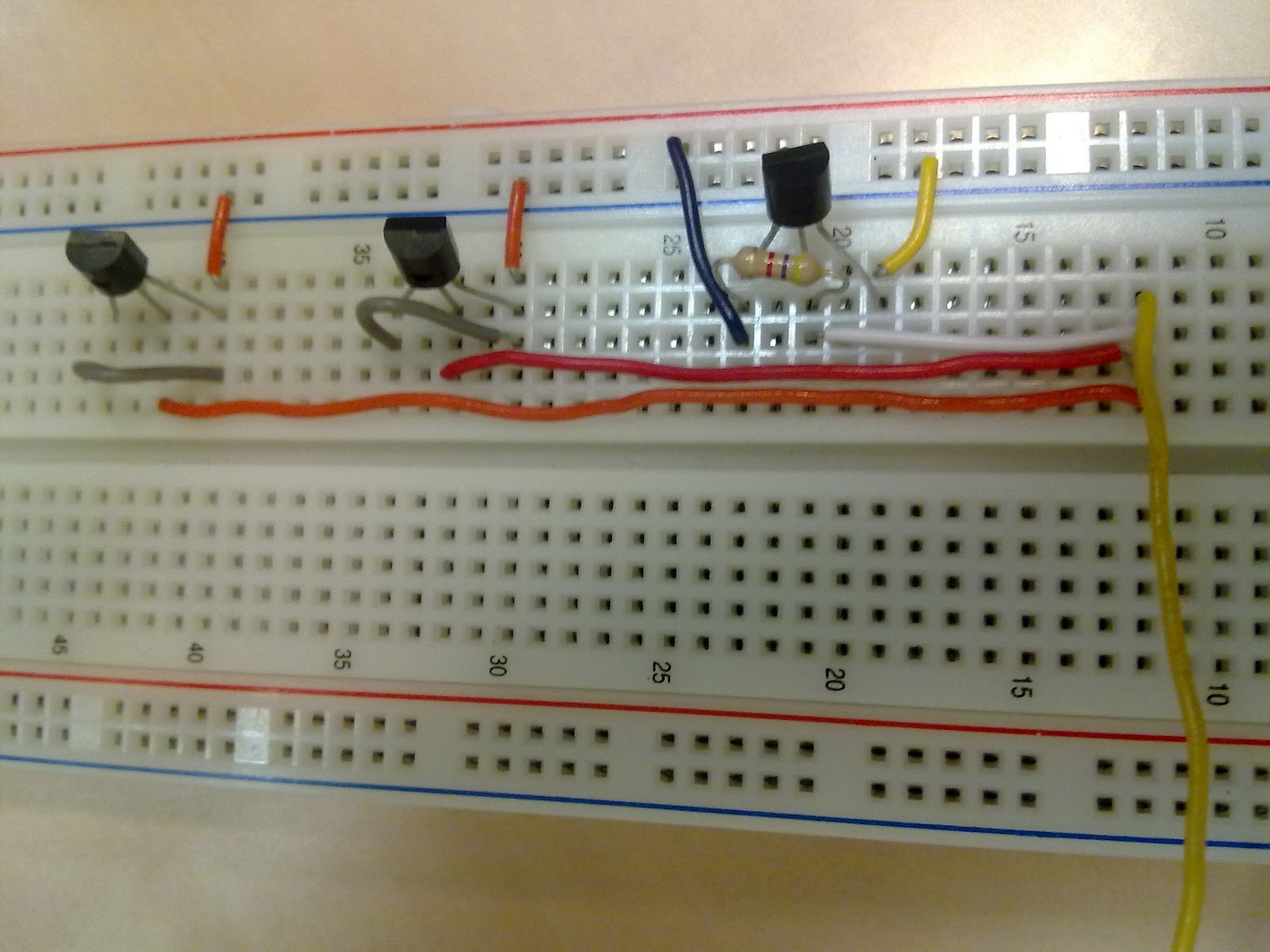
YoperoTech Multiple DS18B20 parasitic mode.
DS18B20 - Parasitic power mode. The integrated circuit DS18B20 (1-Wire digital thermometer) can be connected in two ways. In normal wiring, pin 3 connects the VCC and the circuit is powered from there. The other option is to connect the pins 1 and 3 to each other and connect both to the GND. Then the circuit switches to parasitic mode and is.

Umtmedia® 1/2/5/10 DS18B20 With PARASITE MODE Waterproof Etsy
In our tutorial about the DS18B20 digital thermometer, which you can read here, we have already mentioned parasitic power supply, and now it is time for us to explain what it is about and why it is useful. HOW DOES IT WORK?

Is the parasite mode of a DS18B20 less power consuming than the normal mode? GrindSkills
DS18B20 problem with 'parasite power mode' Using Arduino Sensors Loco144 October 31, 2016, 3:13am 1 Hi, i want use DS18B20 with parasite power mode (VCC+GND, DATA ) I downloaded and used latest library from GitHub - PaulStoffregen/OneWire: Library for Dallas/Maxim 1-Wire Chips
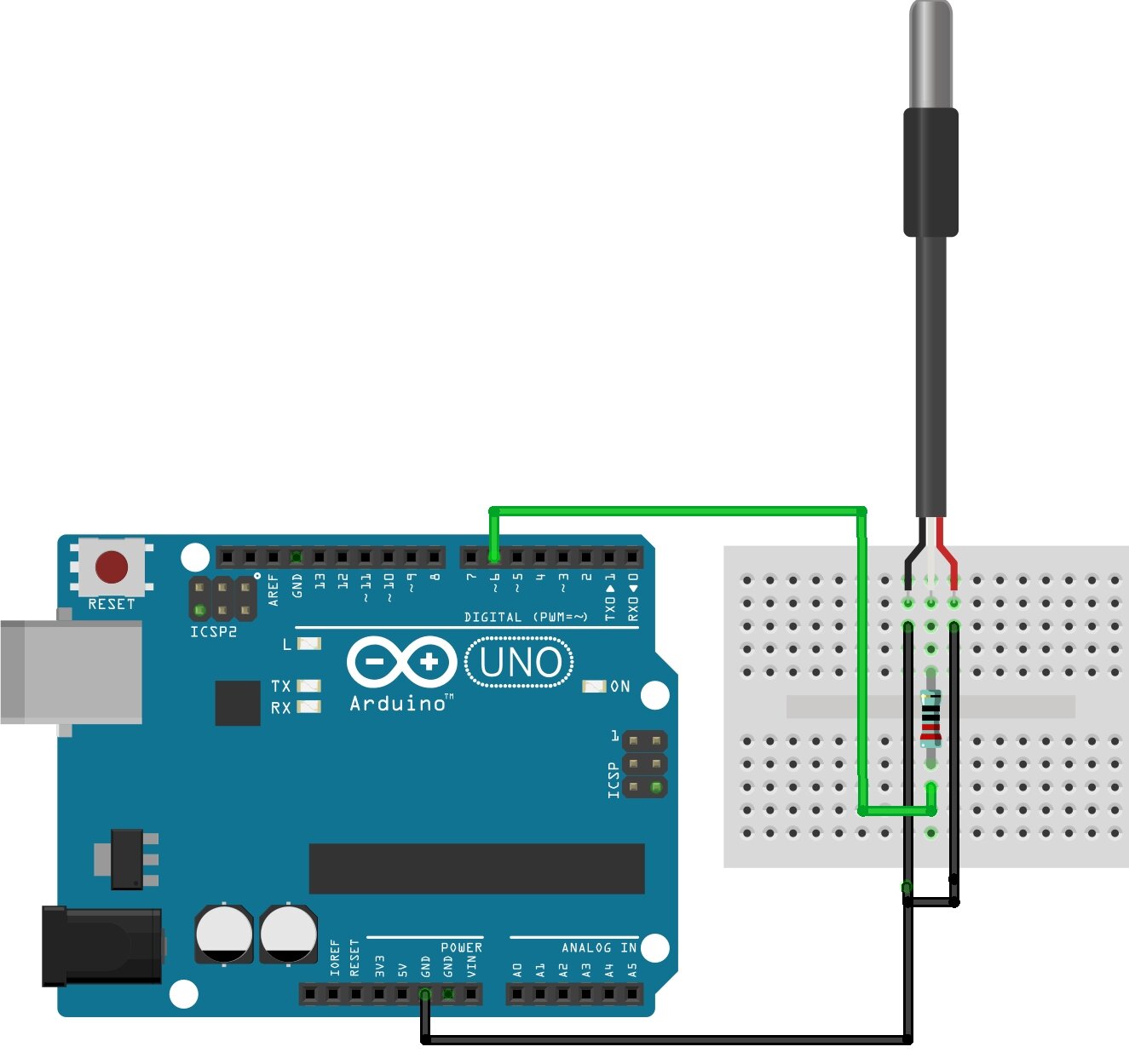
Interfacing Temperature Sensor DS18B20 with Arduino DIY Projects Lab
1 View All Overview Features and Benefits Product Details Unique 1-Wire Interface Requires Only One Port Pin for Communication Derives Power from Data Line ("Parasite Power")—Does Not Need a Local Power Supply Multi-Drop Capability Simplifies Distributed Temperature Sensing Applications Requires no External Components

The Pi & I DS18B20 Connected Using Parasitic Power
DESCRIPTION The DS18B20 Digital Thermometer provides 9 to 12-bit (configurable) temperature readings which indicate the temperature of the device. Information is sent to/from the DS18B20 over a 1-Wire interface, so that only one wire (and ground) needs to be connected from a central microprocessor to a DS18B20.
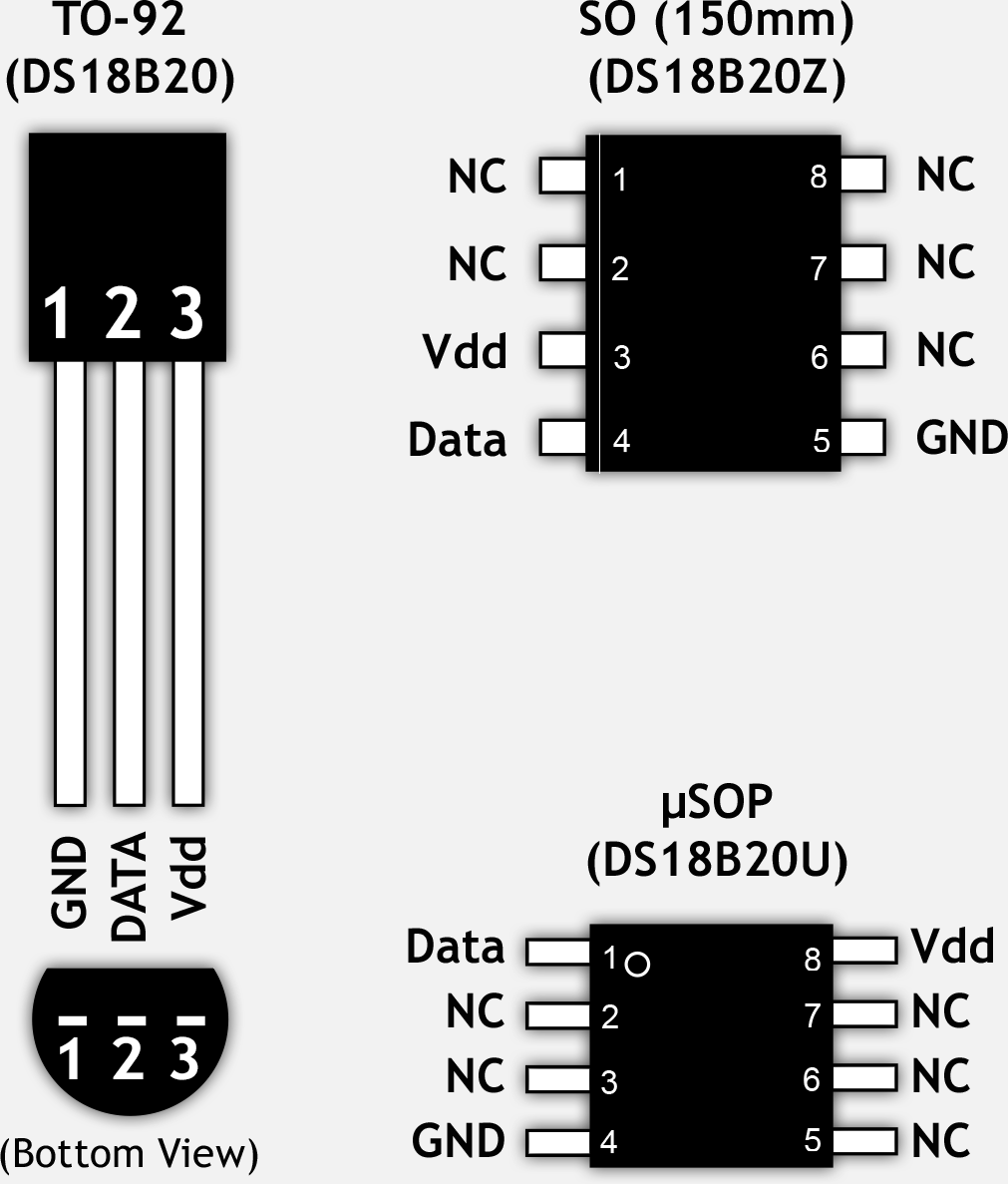
Ds18B20 Datasheet Pdf, Ds18b20 Temperature Sensor Module Open Impulseopen Impulse Power for
The information is sent to/from the DS18B20 over a 1-Wire interface, so that only one wire (and ground) needs to be connected from an MCU to the sensor. Power for reading, writing, and performing temperature conversions can be derived from the data line itself with no need for an external power source (parasite power mode).